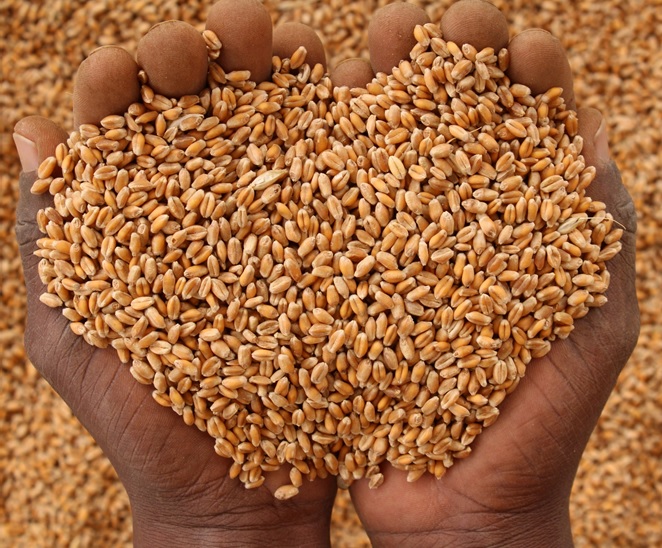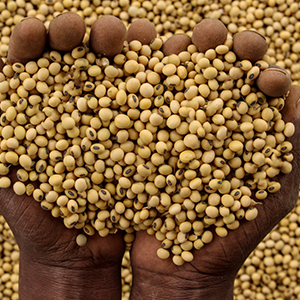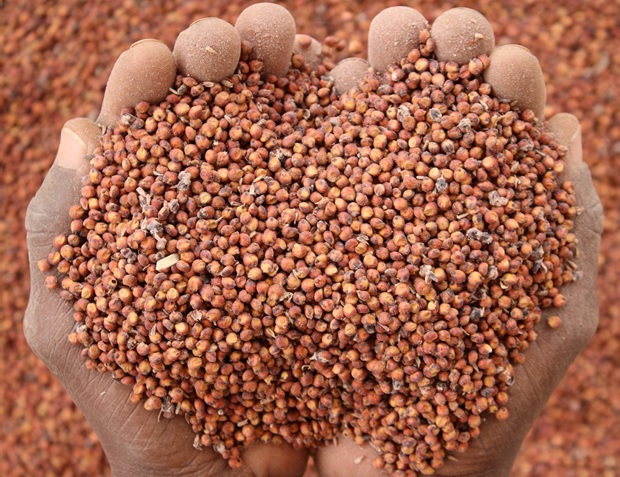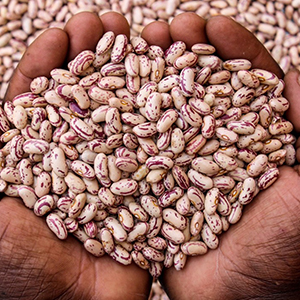Increasing maize productivity levels per hectare is the major driver for achieving food security in the country. Successful Agricultural Transformation requires three major pillars and we normally term them the ‘trinity loop’/ ‘triangular loop’ which involves:
- Germplasm (seed varieties)
- Resources (financial and non-financial) and
- Knowledge (extension).
Germplasm (seed varieties)
In Zimbabwe, we have some very high yielding and prolific conventionally bred maize hybrids. These hybrids couple this high yielding ability with other complimentary agronomic traits like good standability, disease and heat tolerance, fast dry down rate, Water Use Efficiency (WUE), Fertiliser Use Efficiency (FUE), among other traits. The combination of high yields and good complimentary traits is a rare fit to have in agricultural systems and should be duly taken as an advantage to the farmer and the nation.
Resources
Conducive climatic and soil conditions are key comparative advantages Zimbabwe is endowed with. That coupled with a very excellent highly literate human resource base should take Zimbabwe to another level of agricultural productivity and food self-sufficiency. Our water bodies have a capacity to irrigate more than 2 million hectare.
Knowledge and Extension
Agricultural extension plays a central role in promoting productivity and ultimately food security and livelihoods through educating farmers on GAPs (Good Agronomic Practices). In our view, the extension services personnel in Zimbabwe is technically aware and robust and this bumper harvest can also be partly attributed to AGRITEX teams on the ground. According to studies done by John Basera in 2016, published in the Asian Journal for Agriculture and Rural Development (AJARD), at least 90% of farmers in Zimbabwe receive extension services (at least three times a season). It means our farmers have all the necessary technical information on GAPs at their disposal.
The above account shows that the ‘trinity loop’ is the basis for assuring Food Security ‘Autarky’ in Zimbabwe. The ultimate goal of maize farming is not growing the crop only, but the cultivation and perfection of human beings i.e. improving peoples’ livelihoods and economic wellbeing.
Economic implications (farm and national level)
Maize is a major income earner amongst farmers (small and large) and a significant contributor to the country’s Gross Domestic Product (GDP). The bumper harvests result in GDP growth, food security, maize exports (not really a far-fetched dream- it’s possible), decrease in import bill among other major scores for the country’s economy. Reclaiming the bread basket status is no longer a pie in the sky, but rather attainable.
To the farmer, maize production is one venture with a very lucrative Return On Investment (ROI) and of course ROI is a function of Productivity and Price.
And Now…
Now with the bumper harvest in mind, we need to get geared at the farm level and as a nation with regards to preparing for harvesting, marketing and storage.
To the farmers, we advise them to plan ahead, prepare and harvest on time – (come in with a winter crop such as wheat and utilise the abundant land and water resources)! Thanks thee to the Mighty God for the good rains, most of the dams are filling to capacity!
It is imperative to equip farmers with harvesting and storage tips as we gear for a bumper harvest.
Plan ahead and prepare for the harvest
Farmers should plan for harvesting, prepare equipment early and set/calibrate machinery, packaging/bagging materials and dryers should be in place and ready. In addition, at least two full days will be needed to check machinery for proper maintenance, adjustment and safety before harvest. We advise farmers to review owner’s manuals of their harvesting implements before making adjustments.
Check moisture levels
Harvesting and drying can commence when the crop reaches a maximum moisture level of 20% and below. It makes an economic sense to harvest and dry a crop at this moisture level. The optimum storage moisture levels for maize grain is 12.5% and below.
Hand harvesting
Bang Board Trailer:
This is an option to farmers who cannot access combine harvesters. Cobs are loaded (by throwing) directly into a tractor drawn trailer which is fitted by a bang board. We recommend 6 rows to be harvested on each side of the trailer at a time. This is because workers become less accurate as the number of rows increase and forward speed is also reduced. The cobs in the two rows straddled by the tractor wheels are harvested first and heaped on the sides and loaded later.
Drums/Sacks and trailer:
When large harvest gangs are available, we can recommend the drums and trailer method. Cobs are harvested into a 25-litre container or a 25kg empty bag then emptied into a tractor/animal drawn trailer. Larger containers can also be used but two workers may reap into one container. For efficiency, two tractors and three trailers will be ideal if the gang is large. The crop (with husks) is then shelled using a tractor driven sheller.
Using Sacks only:
Some farmers prefer reaping directly into sacks. This system is particularly useful when shelling is done in the field. The cobs are reaped into the sacks by reapers and they are emptied into a tractor towed sheller. The ratio of reapers to waiter is 2: 1. Reaping can be done directly into a towable sheller. However, this has proved to be inefficient in most cases as reapers may fail to match sheller rate.
Mechanical harvesting:
Combine harvesters are mostly used and are a modern harvesting technology which comes in two types (Conventional and Rotary). A combine harvester performs a bout of functions in a single go…(cutting the stalks, picking, de-husking, shelling, winnowing, blowing out chaff, cleaning the grain and loading bins/trailers for delivery).
With a combine:
- The farmer is independent of labour hires
- There is faster rate of harvesting than with hand harvesting, so the method suits large hecterage
- The machine can chop up the stoves for ploughing down and/or planting
- This method works well with bulk handling operations
However:
- When there are problems with cob rots, there is no possibility/provision of sorting out the affected cobs.
- The combine cannot pick up cobs lying on the ground and as a result it will not work efficiently on lodged crops.
- Steep slopes, small fields and moisture content (high) of the crop affect the efficiency of the machine.
- The combine cannot work well in densely weeded fields.
What needs to be checked on a combine harvester?
Harvesting losses must not exceed 3% when using a combine harvester and therefore it is important for farmers to do a ‘health check’ from ‘front to back’ using a check list provided by experts/suppliers. Always target ZERO breakdowns during the harvesting period. A health check is critical for example, checking the following points:
Fan belts, bearings (for wheels and shafts), chains, cutter bar (check all inspection points), intake auger (check all chains), winnowing fan (which blows the chaff), grain pans/sieves, augers to grain tanks, straw shredders, among other points, must be checked and if need be rectified, adjusted or even replaced.
Factors that affect combine efficiency and reaping output. Lookout!
- Crop moisture levels:- Dry crop and cobs are easier to pick, de-husk and shell. A crop can be harvested below 20% moisture content. Moisture levels above 20% can compromise harvester efficiency.
- Row spacing: Spacing must suit the cutter bar spacing and usually ranges from 70-90cm (depending on combine make). When there is no uniformity then knocking down will result and may cause harvesting losses and increase gleaning expense bill.
- Cob placement and standability: A variety with good standability and average cob placement is easily and efficiently harvestable. A lodging crop is difficult to harvest with a combine and can cause harvesting and yield losses. That is the reason why we always recommend varieties with good standability and to always plant at recommended population densities.
- Land terrain: a well prepared and levelled (even) land is easy and less costly to harvest. Otherwise speed must be adjusted/rather reduced if terrain is not even.
- Combine: trailer/truck/bin ratio: we always recommend farmers to strike a good balance of combine harvesters and trucks in the field.
Gleaning
Field inspection during harvesting is always recommended. All knocked down crops and fallen cobs must be picked up by gleaning gangs. A relatively sizable gang is sent into the field to pick up the leftovers following a combine harvester. The collected leftovers can be shelled by a sheller or fed into a running combine.
Grain drying
Harvesting when moisture content is high may necessitate drying the crop/grain to the optimum moisture level for shelling/storage. To maximise on land/irrigation utilisation, a farmer may be advised to harvest a maize crop before reaching storable moisture level (12.5%). This will require drying the crop/grain which can be done naturally or artificially. With natural drying the cobs are left on the plant to dry or reaped and heaped in strips on open dry land/slabs. The cobs can also be reaped and put in cribs and left to dry to the required moisture content. Alternatively, grain is dried in bags; but this tends to be a very slow process. Normally natural drying is common when the weather is sunny.
In artificial drying, the underlying concept is ‘forcing heat through the grain’. The heated air then causes moisture to evaporate from the grain. The rate of drying depends upon the temperature of drying air, velocity of the air through the grain and the uniformity of its distribution in the drying silo/chamber. Maximum temperature of drying air will depend on such factors as the type of crop to be dried, the use of the crop and the system of drying being employed.
On farm maize storage
Maize can be stored as ‘bulk’ or bagged. The storage facility must be suited to the method of delivery. Bulk stored grain is loaded into bulk trailers/bins using augers. Bagged grain usually requires conveyors or labour for loading.
Bulk storage
There are many methods that can be used for the bulk storage. Examples are: above ground silos, bulk containers and bags stored in the open or in buildings.
There are a number of pros for the bulk storage method. These include:
- It is more economical than bag storage
- Less supervision is required
- Labour requirements and handling are reduced
- It is more hygienic than bag storage
However, bulk storage has some cons in that:
- It is costly in terms of capital outlay requirements than bagging.
Conditions for bulk storage
- The maize grain must be dry; with less than 13.5% moisture content.
- The storage facility must be structurally sound and designed for loading and offloading.
- The storage facility must be weather tight and dry, thermally insulated from the sun’s radiation and also rodent free.
- The facility must be convenient for inspection, fumigation and cleaning.
- The facility must be provisioned to allow loading (of grain by augers) and offloading of grain (from the field).
Chemical treatment for long-term storage
Maize in storage can be affected by many pests including: maize weevil (Sitrophilus spp), Indian meal month (Sitrotoga cereale), Flour beetle (Tribolium castaneum), Sawtoothed grain beetle (Oryzaephilus surinamensis), Lesser grain borer (Rhyzopertha dominica), Larger Grain Borer (Prostephanus truncates), Rusty grain beetle and other storage pests. These post-harvest pests can cause significant yield losses if left uncontrolled hence we recommend the use of stored grain chemical protectants. Several options are available on the market.
Always read chemical labels carefully, use safe practices and adequate protective gear during application. Always observe recommended pre-consumption intervals on the grain protectant labels.
Farmers should note: always and continuously lookout for termites which can wreck havoc on crops from grain filling up to physiological maturity and drying stages (especially during inter-season dry spells). We recommend farmers to apply necessary chemicals (termiticides). This is to safeguard the yield and to make sure an ‘almost’ seamless combine harvesting and avert sorting/grading losses.
A bumper season is inevitable. A Green revolution is imminent in Zimbabwe! Plan, Prepare, Harvest on time at the right moisture levels and treat grain for good storage.
About the authors
John Basera is a seasoned Agronomist and Agribusiness expert working for Seed Co as Head of Agronomy Services. He is a PhD researcher with research interests in Agricultural Technology Adoption, Systems Dynamics and Agribusiness Modelling, among others. He can be contacted on +263 772 413 184/ john.basera@Seed Cogroup.com.
Dr Gorden Mabuyaye is a world class maize breeder and Global Maize Breeding Lead at the Seed Co Group. He can be contacted on +263 772 132 767/gorden.mabuyaye@Seed Cogroup.com.
 Zimbabwe
Zimbabwe Seed Co Group
Seed Co Group Botswana
Botswana Kenya
Kenya Malawi
Malawi Nigeria
Nigeria Tanzania
Tanzania South Africa
South Africa West & Central Africa
West & Central Africa Zambia
Zambia




